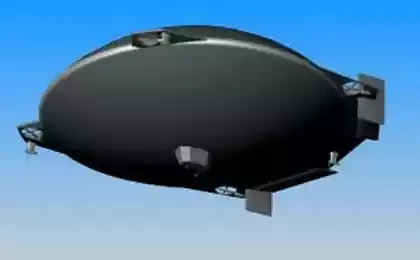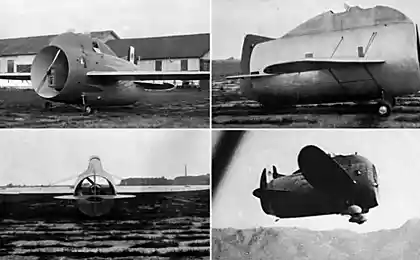1333
10 most bizarre of aircraft in aviation history
Planes are not always looked elegantno
The invention of aircraft, allowing people to travel in the atmosphere, on the list of the greatest innovations of mankind. Aviation defies limits and in this area all the time there are new ideas, but the airplanes listed below, not even remotely fit the concept of "normal».
1. Convair V2 Sea Dart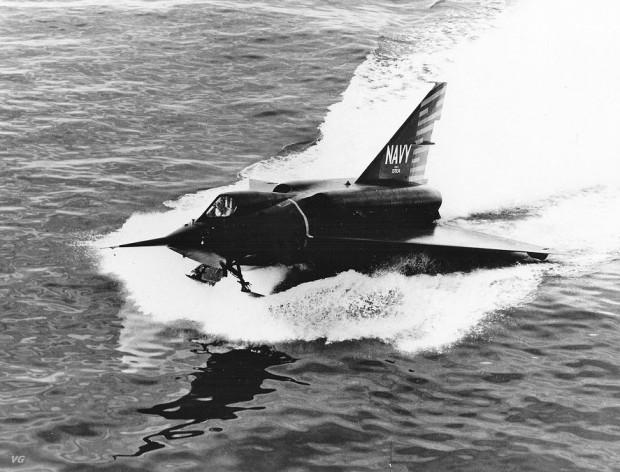
In addition to the standard planes, pilots are often available very interesting specimens of aircraft. The Fighter, which now will be discussed, could make a landing directly on the surface of the ocean. He greatly expanded the duties of pilots at the time of turning them from ordinary pilots in the operators of ski gear. Convair V2 Sea Dart was an experimental American fighter, it was built in 1951, the year as a prototype supersonic seaplanes staffed watertight housing and a pair of hydrofoils.

From the production of fighter aircraft, it was decided to abandon after the crash, resulted in the death of the pilot. Nevertheless, he became the first (and currently - only) seaplane to break the sound barrier.

2. Goodyear Inflatoplane
When the company that manufactures automobile tires, aircraft entering the market should expect a very unusual results. In 1959, The Goodyear Tire tried to meet the demands of the market for a small, comfortable aircraft and its response to these requests was very bizarre. Open cab Goodyear Inflatoplane was completely made of rubber.
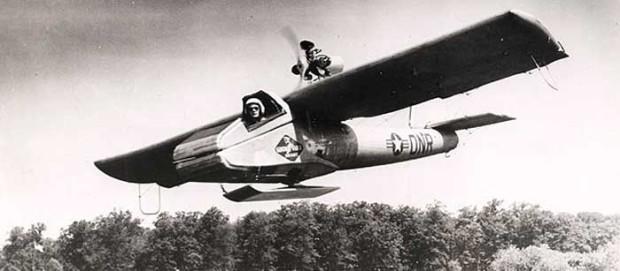
In fact, there was still a rubber other than the motor and wires. The aircraft can be put in a box of 1 meter, and it can be fully inflated with a normal bicycle pump in just 15 minutes. With an aerodynamic point of view, the car was excellent, as was raised in the air with incredible ease. However, The Goodyear Tire faced with serious problems. They never were able to convince the military to buy their offspring after the military learned that the plane will be the one to bring down the entire bullet or shot from a slingshot.
3. NASA A1 Pivot-Wing
NASA A1 Pivot-Wing was able to raise the concept of "strange aircraft" to a whole new level. It developed in the early 80s, in order to verify the concept of the rotary wing. A long, thin wing of the jet aircraft could be rotated such an incredible angle that is practically parallel to the cockpit. The idea behind this unorthodox and innovative approach has been exceptional in that manner to compensate for the disturbance of the air flow vortex.

Strange airplane even made several flights, and flew it surprisingly well, but the results still were not considered sufficiently compelling to justify the cost of its production. However, modern drones, which are based on the design of the aircraft, currently under development.
4. Vought V-173
Vought V-173 was developed in 1942, the year as a prototype aircraft with vertical takeoff and landing, capable of intercepting enemy fighters taking off from the deck of an aircraft carrier. A strange construction Test Pilots nicknamed the plane "flying pancake».

The fuselage had a round shape. A pair of motor drives the huge propellers that touched on the ground for takeoff only because elongated landing gear. Low demand and one accident decided the fate of this project, but it has begun to develop in this direction, which in the end led to the famous Harrier Jump Jet.
5. Bell P-39 Aircobra
Still, sometimes it's better to stick to the experts only of what they know really well. During the Second World War, the company Bell Helicopters has released a powerful and incredibly maneuverable fighter with excellent combat characteristics.
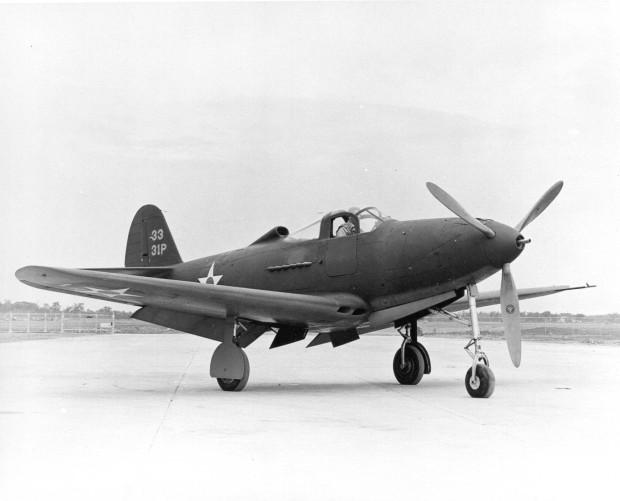
Most aircraft engines are located in the front, but Bell, as the helicopter company, has created a fighter with the engine, the center of which was located behind the cockpit. Long shaft coming from this engine, rotating propeller in front, but this structure has led to an unusual center of gravity of the machine. This "celestial serpent" in the war shot down more enemy aircraft than any other fighter of the US Air Force. However, some of the "Cobra" were killed not because they were shot down by the enemy, but because they fell themselves easily falling down in the "spin" even for the most minor errors of pilots.
6. SR 71 Blackbird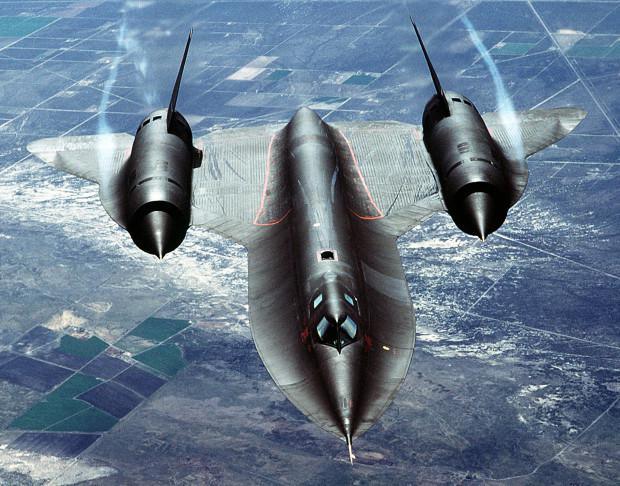
SR 71 Blackbird was created before the era of universal satellite technology. It was the first of its kind reconnaissance plane, with unprecedented speed and flight range. He was able to rise to incredible heights, and he looked like a terrible, almost alien spacecraft.

However, in the construction of SR 71 Blackbird had serious flaws. As soon as the plane up to a height of 7 km, and accelerate to a speed of 3300 km / h, as his outer skin is heated to 400 degrees, and began to glow red. This hellish picture outside the cabin is not too happy with the pilots. Although the cabin was insulated with asbestos, the pilot still had to sit there for half an hour after landing, in order not to singe his legs at the exit. Even the transparent canopy is heated to 300 degrees.
7. Convair Pogo
The Grumman X23, aka «Pogo», represents a radical departure from all norms of aircraft construction. It was not even something of an eccentric, it was a full-scale nonsense. In appearance Pogo slightly resembled an ordinary airplane, if not pay attention to the jet engine, mounted in the nose cone machine. This engine allows Pogo take off vertically. That's only in contrast to the majority of aircraft with vertical takeoff and landing, the nose lifts up before takeoff Pogo up at a right angle, so that the pilot in the cockpit almost lying, like an astronaut in rakete.Tolko after such pretreatment Pogo could take off.

It made several successful test flights, but like many other air failures, the project was not able to fly away from the earth.
8. McDonnell Douglas X-15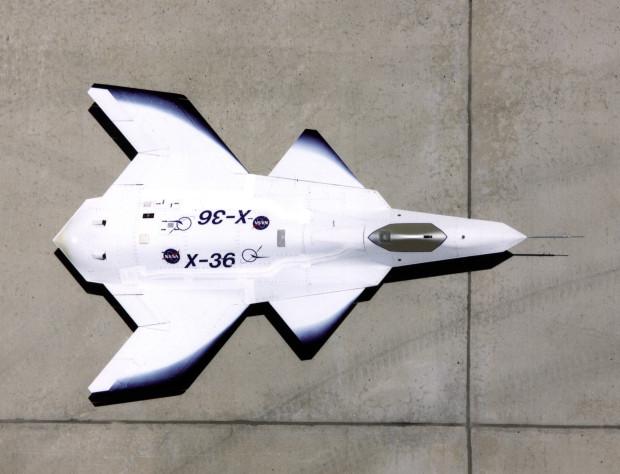
X-15 is a very old project, but it was such a significant and anomalous leap forward, that he still remains unsurpassed in the history of aviation. First tested in 1959, an experimental rocket plane X-15 was 2 m long, with two tiny meter stub wings on each side.

A series of tests showed that the rocket plane is able to reach a height of 107 km, so that the two missions were carried out qualified as space flights. When this small plane passing through the atmosphere, its speed six times the speed of sound. Boarding the X-15 was covered with a special nickel-based alloys, which was similar to the one found in meteorites. This alloy does not allow the fastest aircraft in the world to burn in the atmosphere.
9. Blohm und Voss BV 141
In the normal world, symmetry is the rule, which can be traced in almost everything, from the eyes to the wings and fins. Engineers when creating their inventions also inspired by this principle, it is generally true for aircraft engines. However, during the Second World War, the German engineers from the company Dornier significantly deviated from this norm, and created a spy plane, tailplane which was located only on one side, and the cockpit was located asymmetrically on the opposite side.

At first glance, this design looks unbalanced. However, due to the fact that the cabin is located on the right side and the left is carrying a prop during flight occurs torque, which helps the aircraft to fly straight. As a result of this bizarre machine not only successfully off the ground, but subsequently inspired many creators of modern sport aircraft to create devices with a similar design.
10. Caproni Ca.60 Noviplano
Consider a home on the water, crossed with the plane. This idea was the basis Caproni Ca.60 Noviplano. This machine set "the bar weirdness" for airplanes is so high that even the "Red Fokker" Richthofen than it looks very pale. The length of the aircraft was 23 meters. The weight - a whopping 26 tons. This floating and flying machine was built to become the first trans-Atlantic airliner in aviation history.

Based on the theory that with sufficient wing can be lifted into the air anything, engineers have created a stack of three wings in front and three in the middle. Instead, the tail was used one more, a third set of wings. This monstrous machine, probably can be classified as a triple triplane, and nothing like this either before or after it has not been built.

Off the ground it was not a problem, but right after take-off, at an altitude of 18 meters, the machine began to fall apart, and then fell into the water. Both the pilot died. After that, the plane was repaired, but he later burned. It happened at night, and the details of the incident are still not fully understood.
via factroom.ru

The invention of aircraft, allowing people to travel in the atmosphere, on the list of the greatest innovations of mankind. Aviation defies limits and in this area all the time there are new ideas, but the airplanes listed below, not even remotely fit the concept of "normal».
1. Convair V2 Sea Dart

In addition to the standard planes, pilots are often available very interesting specimens of aircraft. The Fighter, which now will be discussed, could make a landing directly on the surface of the ocean. He greatly expanded the duties of pilots at the time of turning them from ordinary pilots in the operators of ski gear. Convair V2 Sea Dart was an experimental American fighter, it was built in 1951, the year as a prototype supersonic seaplanes staffed watertight housing and a pair of hydrofoils.

From the production of fighter aircraft, it was decided to abandon after the crash, resulted in the death of the pilot. Nevertheless, he became the first (and currently - only) seaplane to break the sound barrier.

2. Goodyear Inflatoplane

When the company that manufactures automobile tires, aircraft entering the market should expect a very unusual results. In 1959, The Goodyear Tire tried to meet the demands of the market for a small, comfortable aircraft and its response to these requests was very bizarre. Open cab Goodyear Inflatoplane was completely made of rubber.

In fact, there was still a rubber other than the motor and wires. The aircraft can be put in a box of 1 meter, and it can be fully inflated with a normal bicycle pump in just 15 minutes. With an aerodynamic point of view, the car was excellent, as was raised in the air with incredible ease. However, The Goodyear Tire faced with serious problems. They never were able to convince the military to buy their offspring after the military learned that the plane will be the one to bring down the entire bullet or shot from a slingshot.
3. NASA A1 Pivot-Wing

NASA A1 Pivot-Wing was able to raise the concept of "strange aircraft" to a whole new level. It developed in the early 80s, in order to verify the concept of the rotary wing. A long, thin wing of the jet aircraft could be rotated such an incredible angle that is practically parallel to the cockpit. The idea behind this unorthodox and innovative approach has been exceptional in that manner to compensate for the disturbance of the air flow vortex.

Strange airplane even made several flights, and flew it surprisingly well, but the results still were not considered sufficiently compelling to justify the cost of its production. However, modern drones, which are based on the design of the aircraft, currently under development.
4. Vought V-173

Vought V-173 was developed in 1942, the year as a prototype aircraft with vertical takeoff and landing, capable of intercepting enemy fighters taking off from the deck of an aircraft carrier. A strange construction Test Pilots nicknamed the plane "flying pancake».

The fuselage had a round shape. A pair of motor drives the huge propellers that touched on the ground for takeoff only because elongated landing gear. Low demand and one accident decided the fate of this project, but it has begun to develop in this direction, which in the end led to the famous Harrier Jump Jet.
5. Bell P-39 Aircobra

Still, sometimes it's better to stick to the experts only of what they know really well. During the Second World War, the company Bell Helicopters has released a powerful and incredibly maneuverable fighter with excellent combat characteristics.

Most aircraft engines are located in the front, but Bell, as the helicopter company, has created a fighter with the engine, the center of which was located behind the cockpit. Long shaft coming from this engine, rotating propeller in front, but this structure has led to an unusual center of gravity of the machine. This "celestial serpent" in the war shot down more enemy aircraft than any other fighter of the US Air Force. However, some of the "Cobra" were killed not because they were shot down by the enemy, but because they fell themselves easily falling down in the "spin" even for the most minor errors of pilots.
6. SR 71 Blackbird

SR 71 Blackbird was created before the era of universal satellite technology. It was the first of its kind reconnaissance plane, with unprecedented speed and flight range. He was able to rise to incredible heights, and he looked like a terrible, almost alien spacecraft.

However, in the construction of SR 71 Blackbird had serious flaws. As soon as the plane up to a height of 7 km, and accelerate to a speed of 3300 km / h, as his outer skin is heated to 400 degrees, and began to glow red. This hellish picture outside the cabin is not too happy with the pilots. Although the cabin was insulated with asbestos, the pilot still had to sit there for half an hour after landing, in order not to singe his legs at the exit. Even the transparent canopy is heated to 300 degrees.
7. Convair Pogo

The Grumman X23, aka «Pogo», represents a radical departure from all norms of aircraft construction. It was not even something of an eccentric, it was a full-scale nonsense. In appearance Pogo slightly resembled an ordinary airplane, if not pay attention to the jet engine, mounted in the nose cone machine. This engine allows Pogo take off vertically. That's only in contrast to the majority of aircraft with vertical takeoff and landing, the nose lifts up before takeoff Pogo up at a right angle, so that the pilot in the cockpit almost lying, like an astronaut in rakete.Tolko after such pretreatment Pogo could take off.

It made several successful test flights, but like many other air failures, the project was not able to fly away from the earth.
8. McDonnell Douglas X-15

X-15 is a very old project, but it was such a significant and anomalous leap forward, that he still remains unsurpassed in the history of aviation. First tested in 1959, an experimental rocket plane X-15 was 2 m long, with two tiny meter stub wings on each side.

A series of tests showed that the rocket plane is able to reach a height of 107 km, so that the two missions were carried out qualified as space flights. When this small plane passing through the atmosphere, its speed six times the speed of sound. Boarding the X-15 was covered with a special nickel-based alloys, which was similar to the one found in meteorites. This alloy does not allow the fastest aircraft in the world to burn in the atmosphere.
9. Blohm und Voss BV 141

In the normal world, symmetry is the rule, which can be traced in almost everything, from the eyes to the wings and fins. Engineers when creating their inventions also inspired by this principle, it is generally true for aircraft engines. However, during the Second World War, the German engineers from the company Dornier significantly deviated from this norm, and created a spy plane, tailplane which was located only on one side, and the cockpit was located asymmetrically on the opposite side.

At first glance, this design looks unbalanced. However, due to the fact that the cabin is located on the right side and the left is carrying a prop during flight occurs torque, which helps the aircraft to fly straight. As a result of this bizarre machine not only successfully off the ground, but subsequently inspired many creators of modern sport aircraft to create devices with a similar design.
10. Caproni Ca.60 Noviplano

Consider a home on the water, crossed with the plane. This idea was the basis Caproni Ca.60 Noviplano. This machine set "the bar weirdness" for airplanes is so high that even the "Red Fokker" Richthofen than it looks very pale. The length of the aircraft was 23 meters. The weight - a whopping 26 tons. This floating and flying machine was built to become the first trans-Atlantic airliner in aviation history.

Based on the theory that with sufficient wing can be lifted into the air anything, engineers have created a stack of three wings in front and three in the middle. Instead, the tail was used one more, a third set of wings. This monstrous machine, probably can be classified as a triple triplane, and nothing like this either before or after it has not been built.

Off the ground it was not a problem, but right after take-off, at an altitude of 18 meters, the machine began to fall apart, and then fell into the water. Both the pilot died. After that, the plane was repaired, but he later burned. It happened at night, and the details of the incident are still not fully understood.
via factroom.ru
Video, allowing cause hallucinations without bunks * Otik
Spiders are not just lurk in the corners of your home - they jump with a parachute from the sky



